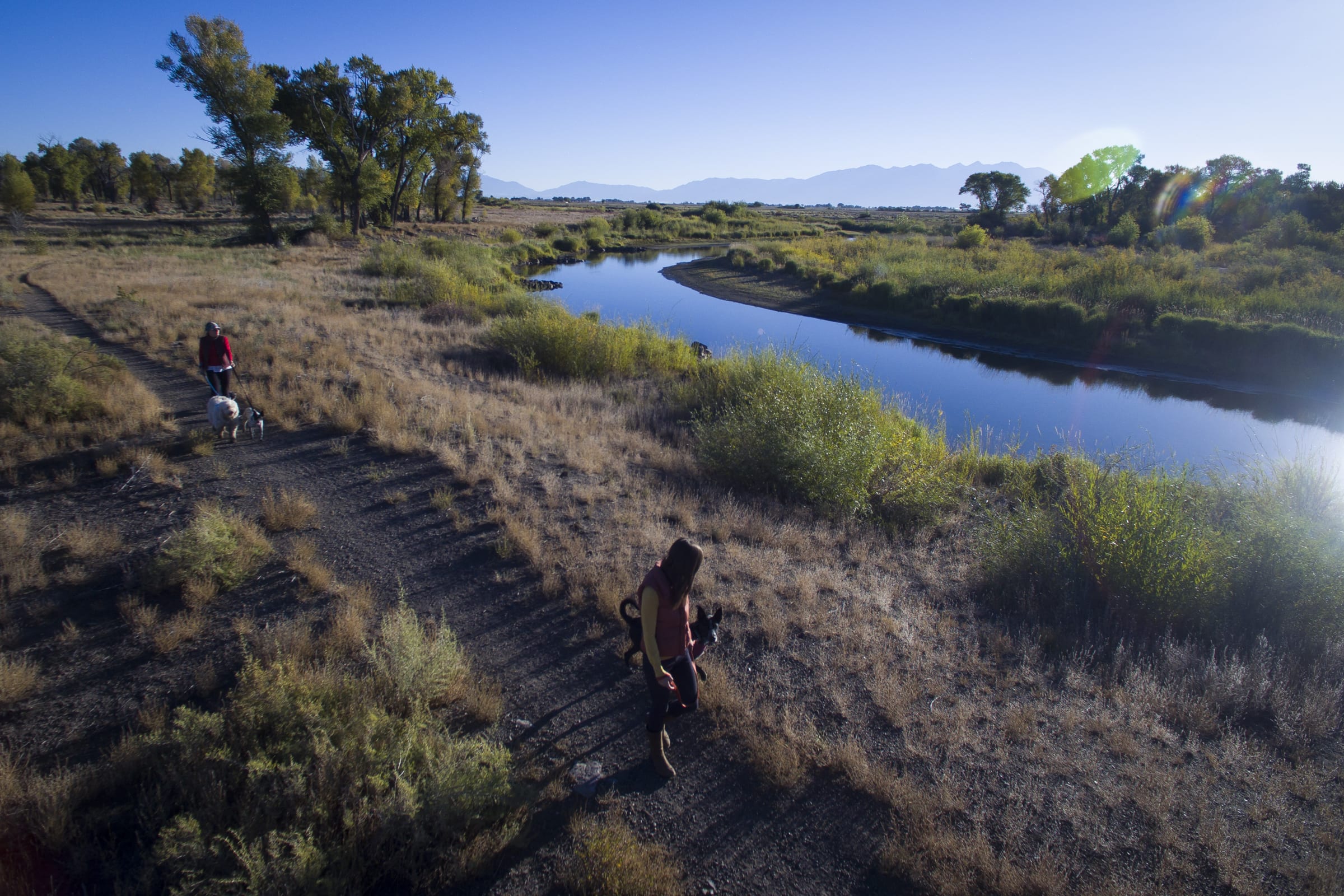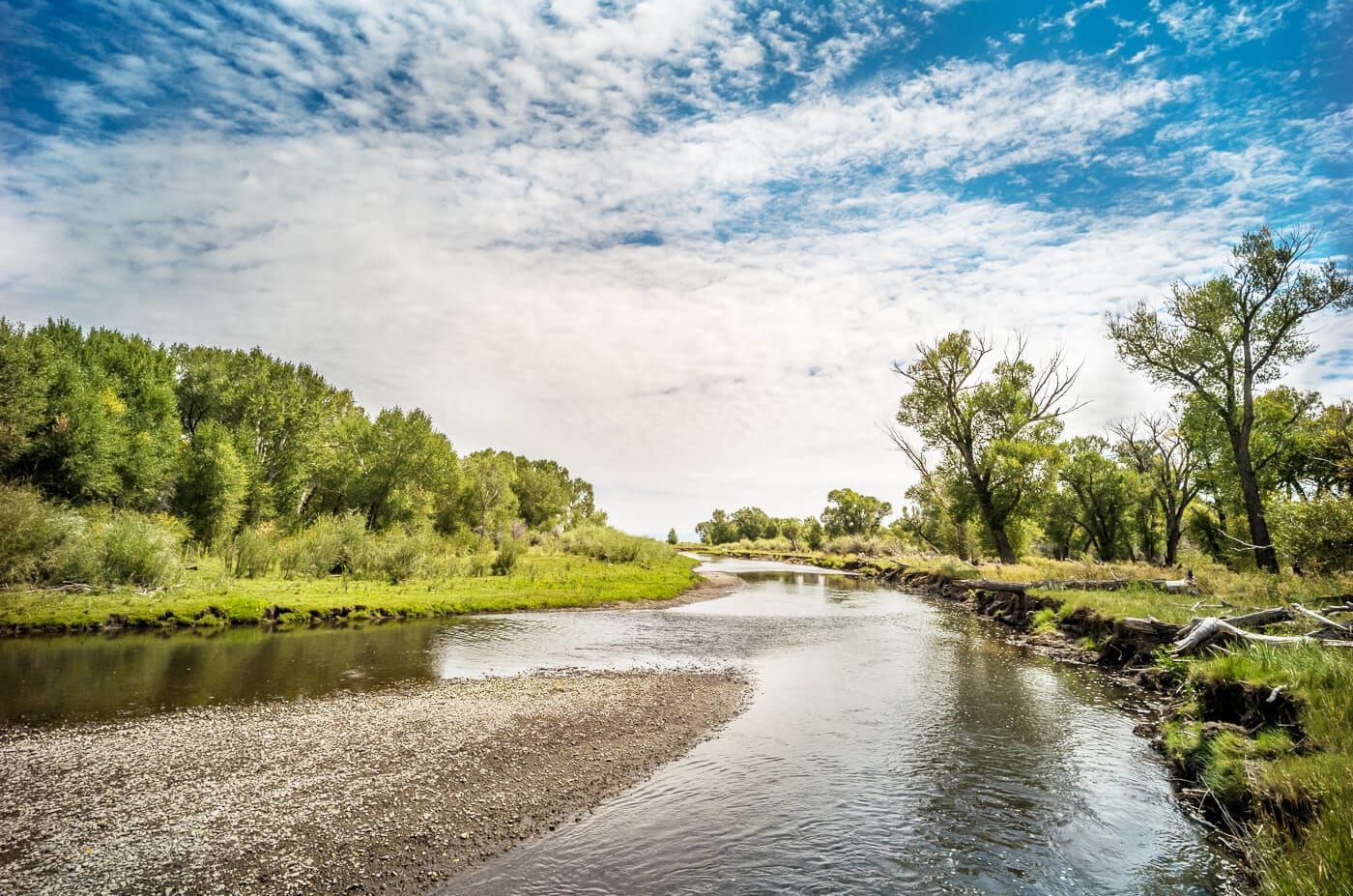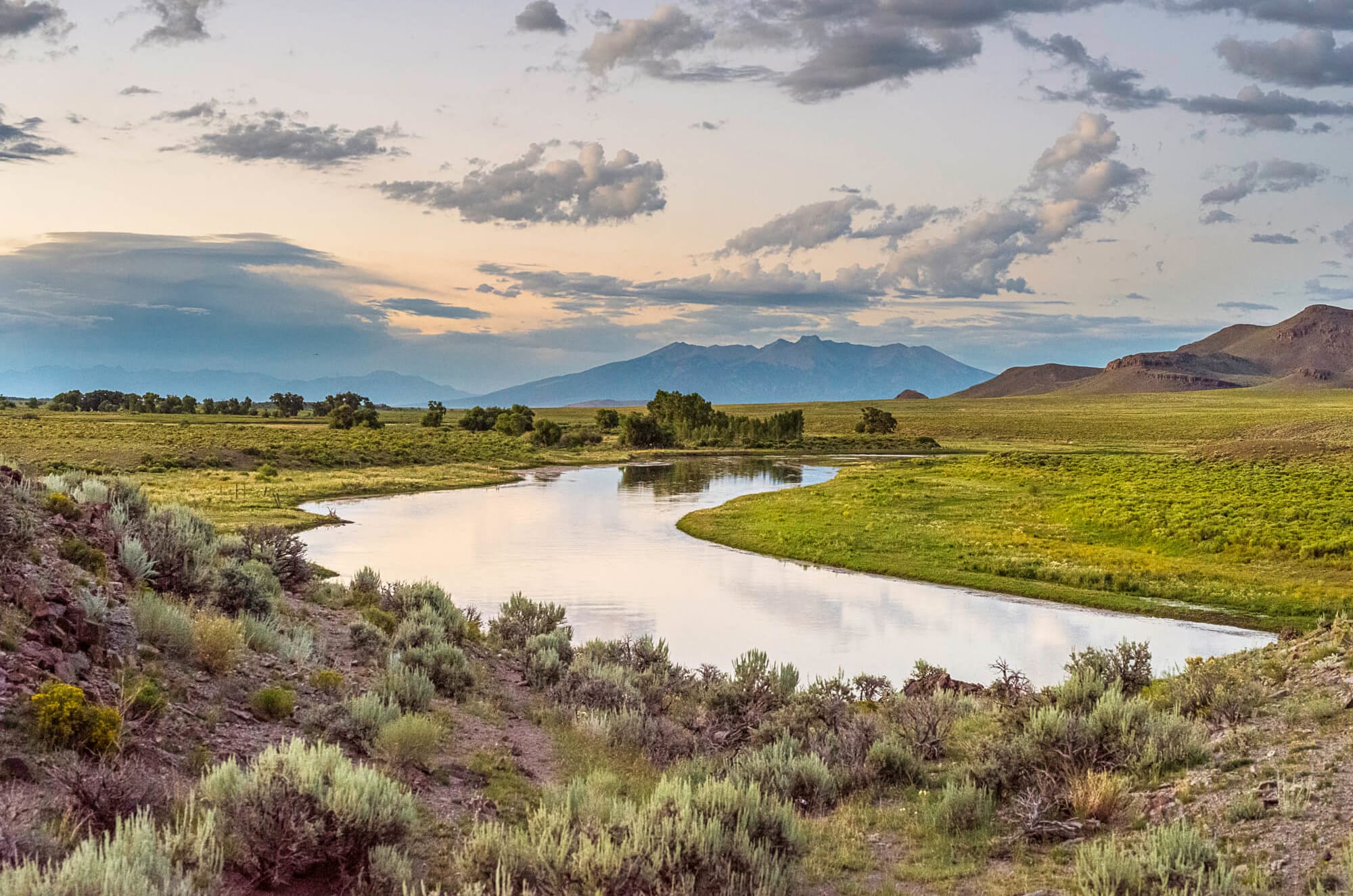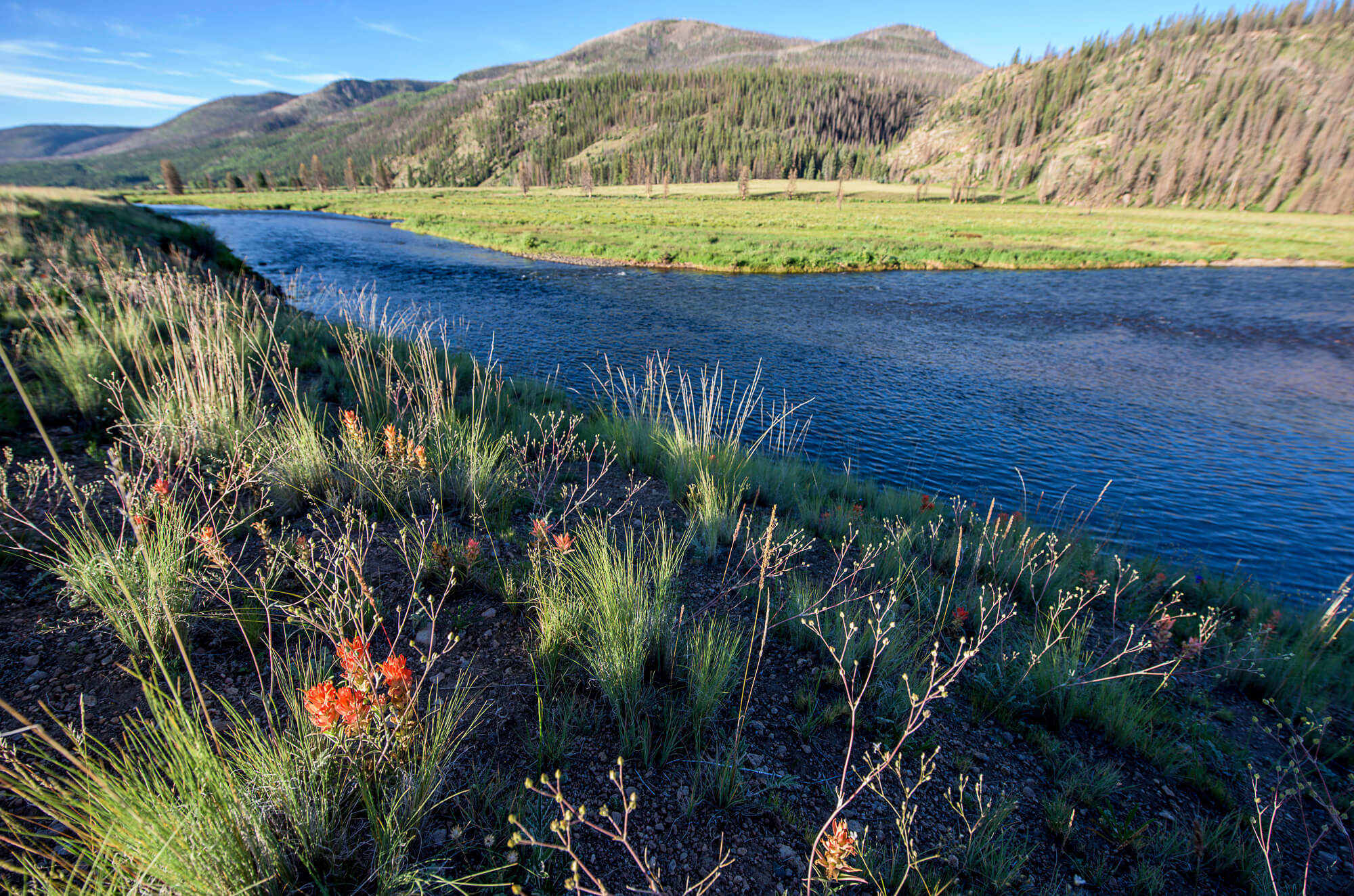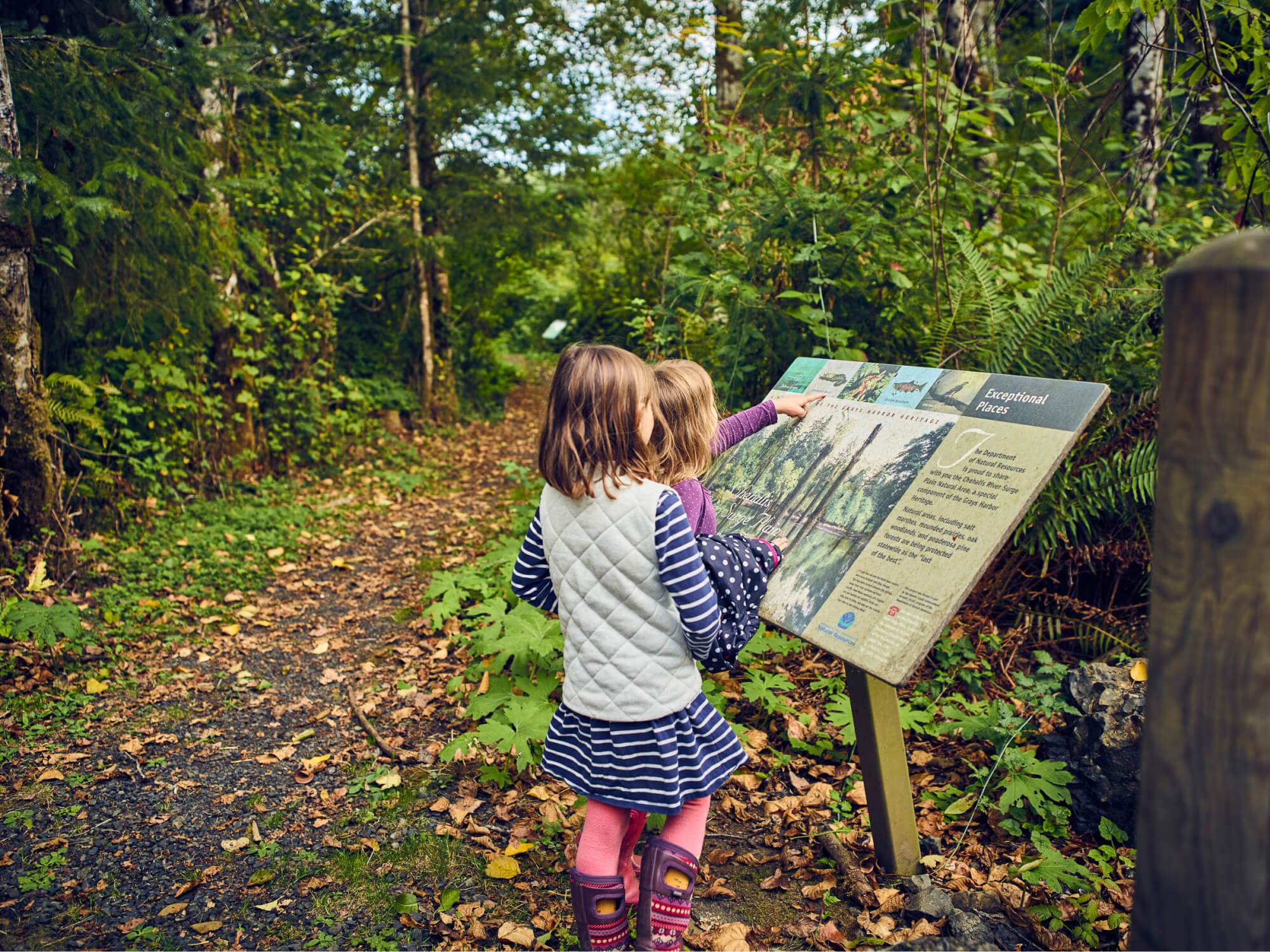A community's need for river access
Colorado’s upper Rio Grande descends from the San Juan Mountains and enters the high San Luis Valley, one of the state’s cultural and natural treasures. During its slow meander through the valley, the river flows through a number of designated and protected areas, including the Rio Grande Natural Area, the Alamosa National Wildlife Refuge and, to the south, New Mexico’s Rio Grande Wild and Scenic River corridor. The river provides essential habitat for fish and wildlife and recreational opportunities for the communities of the valley. It is also the lifeline for many of the small, working family ranches and farms that have been here for generations.
The commercial heart of the San Luis Valley is the city of Alamosa (population 8,780), which lies on the southern banks of the Rio Grande. Despite the town’s proximity to the river, the Rio Grande is difficult to access for the people of Alamosa. When the city began searching for a way to improve livability for its residents, the response from the community was clear: people want to be better connected to the Rio Grande, and they look to the river to boost community health and wellness through recreation and outdoor activities.
Creating the Alamosa Riparian Park
This need presented Western Rivers Conservancy with the unique opportunity to conserve an important reach of the Rio Grande for fish and wildlife while simultaneously connecting the community of Alamosa to the river that flows through its own backyard.
In 2017, WRC purchased 203 acres of scenic riverfront from two landowners who share the community’s vision of a public park astride the Rio Grande. In 2019, we conveyed these lands to the City of Alamosa, creating the new Alamosa Riparian Park.
The park has stunning views up and down the river and anchors a network of bike and pedestrian trails that connect to the city’s trail system. The lands are composed of cottonwood gallery forest and riparian and upland vegetation, and is situated in a matrix of protected lands. It abuts the city’s 108-acre Oxbow Recreation Area and the City Ranch, and serves as an upstream anchor for the city’s developing recreational trail network. It will also connect to and complement access to the Rio Grande Farm Park, Cole Park and the Alamosa National Wildlife Refuge.
WRC’s Efforts in the San Luis Valley
WRC’s work near the city of Alamosa is part of our broader conservation efforts within the San Luis Valley, where we are conserving increasingly rare, intact habitat along the upper Rio Grande and its tributaries, while providing much-needed public access to this great western river and the streams that feed into it.
In 2015, we created the San Luis Valley Conservation Fund in partnership with the LOR Foundation and our local partners Rio Grande Headwaters Land Trust and Colorado Open Lands. The Fund is a collaborative effort to bolster local conservation efforts in Colorado’s scenic San Luis Valley and to preserve the region’s rich cultural heritage, all while enhancing livability for valley communities. The fund includes a $2-million re-granting program called the San Luis Valley Conservation and Connection Initiative, which supports local conservation organizations and ensures healthy futures for the culture and communities that the Rio Grande has sustained for generations.
Downstream from Alamosa, Western Rivers Conservancy recently created the 17,019-acre San Luis Hills State Wildlife Area. It lies directly across the Rio Grande from the Olguin Ranch and Conejos River confluence, which we conserved in 2021. As part of our efforts to conserve the Olguin Ranch, WRC donated a conservation easement to the U.S. Fish and Wildlife Service, dropping the final piece into place in the effort to create the country’s newest unit of the National Wildlife Refuge system: the San Luis Valley Conservation Area. Upstream, we conserved a reach of the main-stem Rio Grande at the western edge of the Weminuche Wilderness. Southwest of Alamosa, we had two more exceptional projects on the Rio de los Pinos, a Rio Grande tributary where we conserved habitat and created new access to a stretch of outstanding trout water.
Funding for the Rio Grande-Chefas Project was made possible through generous contributions from multiple sources, Gates Family Foundation, the LOR Foundation, the San Luis Valley Conservation Fund, the Jacob and Terese Hershey Foundation, El Pomar Foundation, and with the generous support of many additional individuals, foundations and businesses.



